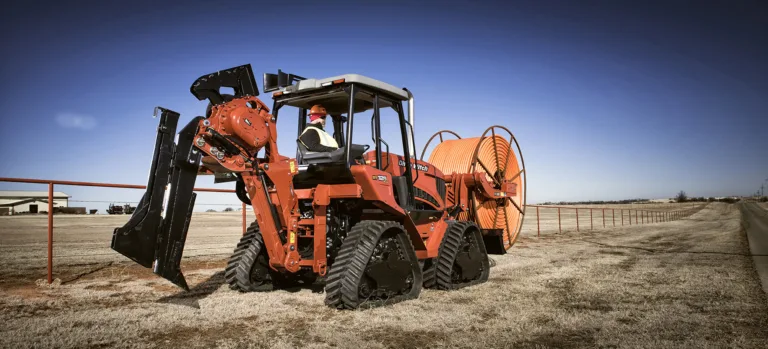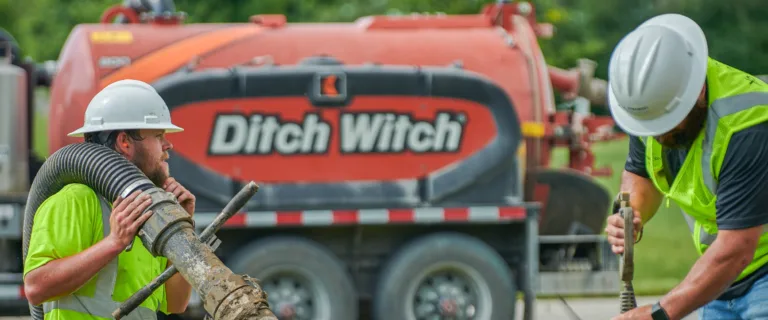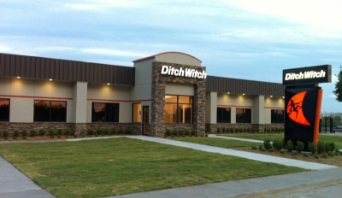When to use vibratory plows for underground irrigation systems
Underground irrigation systems are essential for keeping lawns and landscaping healthy, whether it’s a residential sprinkler system for a front yard or a commercial project spanning several acres. These systems ensure that grass and plants stay watered even during extreme heat and dry conditions.
For landscaping contractors, installing irrigation systems involves two main methods: trenching or vibratory plowing. Trenching requires digging a narrow trench to lay the irrigation pipe, while vibratory plowing allows pipe installation with minimal soil disturbance.
Many contractors prefer vibratory plowing, particularly when soil conditions are favorable, as it is often the fastest and most cost-efficient installation method. There are several compact Ditch Witch plow models well suited for residential irrigation system installations and larger equipment for commercial jobs.
These machines feature a blade attached to a shaker box, which vibrates the blade as it moves through the ground. This vibration helps to break apart the soil, making it easier for the blade to cut through, thus reducing the overall force needed.
The owner of a Massachusetts irrigation contracting firm says his company makes every effort to limit excavation and surface damage during installation of underground pipe and wiring.
“To accomplish that, whenever possible, vibratory plowing equipment is used,” he says. “This method can install pipe and cable without digging a trench and filling it in after pipe is in the ground. Pipe is attached to the compact machine’s plow blade, and the vibrating action of the machine’s shaker box allows the blade to be pulled through the ground, pulling in pipe behind it. Depending on soil conditions, the narrow slit in the ground left by the plow blade often can be quickly restored by driving the tires of the machine over it.”
A North Carolina contractor uses a larger machine for big projects.
“Vibratory plowing is fast, and efficient, and minimizes restoration because no trench is dug,” says the company’s president. “Our basic plow is a ‘quad’ model with four independent tracks instead of rubber tires. The quads take it over rough terrain and across landscaped areas, minimizing turf damage because the tracks distribute the machine’s weight more evenly than tires.”
HDPE pipe installed by plowing ranges in diameter from 3/4-inch to 8 inches. Pipe in diameters to 2 inches is in 500-foot rolls; larger diameters are in 40-foot joints that are butt-fused.
He says in good soil conditions, production can average from 30 to 35 feet a minute; slower in hard soils.
Ditch Witch compact vibratory plows include two compact walk-along models and plow attachments for multiple compact tool carrier models and versatile Zahn® equipment, all of which can accommodate multiple specialty attachments. For large projects, plow components are available for multi-purpose, four-wheel-drive tractors ranging from 30 to 120 horsepower.
Compact models—many able to fit through a 36-inch gate—are used for residential and small commercial jobs. Larger projects usually require ride-on models in the 30- to 55-horsepower range. Big plow units can install main water lines.





